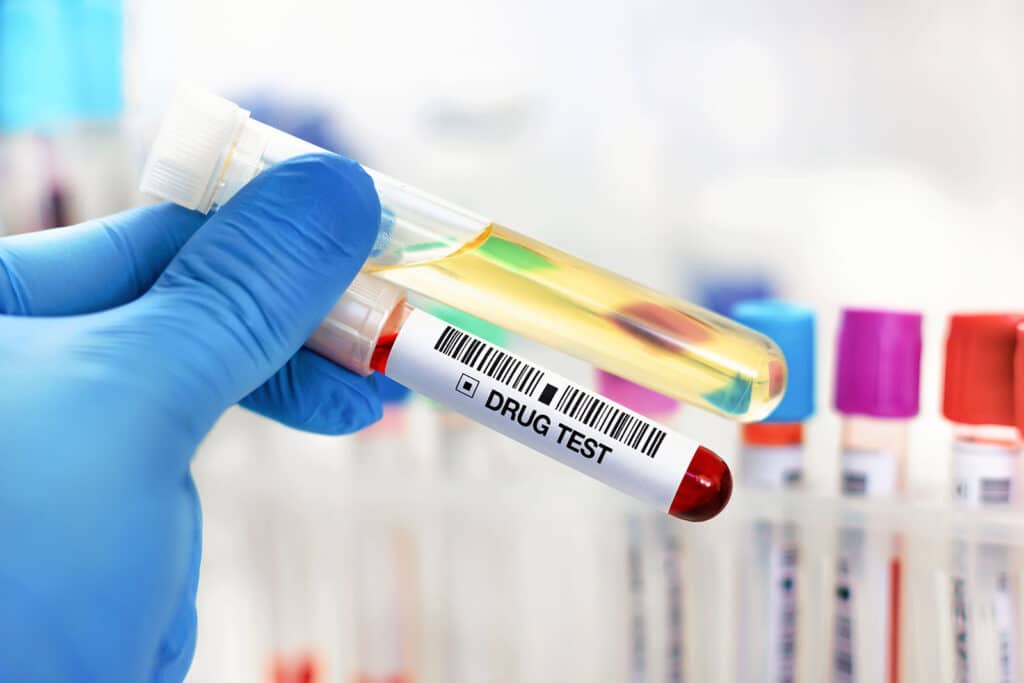Mitragyna speciosa is the Latin name for the tree from which the drug known colloquially as “kratom” is produced. Users tout the “beneficial effects” of kratom, but the truth is that the substance does not work as intended and causes all kinds of harm instead. Supposedly, it lifts mood, boosts energy, and relieves pain. Additionally, it’s also supposed to help ease the unpleasant symptoms of opioid withdrawal.
In reality, the use of kratom can cause seizures, confusion, high blood pressure, liver damage, and death. Between 2014 and 2019, poison control centers in the United States received more than 3,000 reports of kratom poisoning, many of which ended in severe health problems and even death. It’s also contraindicated with quite a few other medications. Check with your doctor to see if anything that you take interacts badly with kratom.
With the prevalence of drug testing for employment, along with other things for which testing is either needed or mandated, people who use kratom are concerned about whether or not it shows up on drug tests.

Table of Contents
Does Kratom Actually Show Up on the Most Common Kinds of Drug Tests?
When it comes to urine tests, kratom won’t show up on a 5-panel drug test that checks for most standard substances because the test is not designed to look for the alkaloids present in kratom: mitragynine and 7-hydroxy mitragynine. The testing authority has to test specifically for these kratom alkaloids, which appear in urine roughly six hours after last use and can last therein for up to nine days.
When it comes to blood tests, the same methods apply. Kratom detection tests must be set up to seek it specifically because standard tests don’t show it.
Although many substances can stay in people’s hair follicles for up to 90 days, there isn’t a reliable test for kratom using hair follicle testing. According to the Keystone Lab, research is ongoing on that score.
| Specialized Kratom Drug Tests | Detection Window | Factors Affecting Detection | |
| Urine Test | Up to 7 days | Dosage, frequency of use, metabolism, hydration levels | |
| Blood Test | Up to 24 hours | Dosage, metabolism, time since last use | |
| Saliva Test | Up to 48 hours | Dosage, saliva pH, metabolism | |
| Hair Follicle Test | Up to 90 days | Long-term use history, hair growth rate | |
Standard 5-panel and 10-panel drug tests do not screen for Mitragyna Speciosa (Kratom).
Why Kratom Isn’t Included in Standard Drug Tests:
- The active alkaloids in Kratom, mitragynine and 7-hydroxymitragynine, are not opioids but interact with opioid receptors.
- Standard drug panels primarily test for federally regulated substances like THC, cocaine, opiates, amphetamines, and PCP (5-panel) or additional prescription drugs like benzodiazepines, barbiturates, methadone, etc. (10-panel).
If Kratom testing is a concern, a special request must be made for a lab to include it in a drug screening.

How Long Does Kratom Stay in Someone’s System?
The pharmacological half life of kratom is roughly a day. There is so little research available on this substance that the most recent study on point is from 2015.
Assuming that the testing authority uses a test that is designed to detect kratom, the usual length of time where it can be detected, nine days, can be affected by several factors. These include:
- Body weight
- Amount of kratom the person took
- The length of time that the person has been taking kratom regularly
- The person’s metabolism
- The person’s liver function
- How the person hydrates during the usual detection period
- The person’s overall health
Potential Risks of Kratom Use
As stated, the risks include both mild and serious effects. Many of the worst effects come from interactions with contraindicated substances, but kratom itself, especially in cases of long-term heavy use, can cause liver damage and gastrointestinal problems. There are also concerns regarding kratom’s effect on fetuses and unborn babies when a pregnant person uses the substance.
A little more than 30% of people who use kratom generally experience negative side effects in their cardiovascular and neurological systems in addition to the endocrine and gastrointestinal effects. In a portion of those cases, users also experience negative psychiatric effects.
Kratom interacts negatively with many classes of drugs that have well-known therapeutic effects. They include:
- Pain relievers, especially opioids
- Mood stabilizers
- Tranquilizers
- Antidepressants
- Anxiolytics
- Most other drugs that affect the central nervous system
For further information, remember that kratom interacts negatively with certain substrates of various CYP isoforms. Should you have difficulty understanding this additional information, the experts at Illinois Recovery Center can assist you.

Recognizing Kratom Dependence
Kratom dependence mimics opioid dependence in many aspects. People with kratom use disorder experience cravings for the substance. In many cases, the cravings become so severe that the person cannot concentrate on anything else, and the person will use kratom more and more each day.
Kratom produces tolerance quickly, so people with KUD wind up needing more and more of the substance to achieve the same effect, which quickly exacerbates the “more-and-more” cravings the person already experiences. People with KUD also strive to keep a large amount on hand so that they don’t run out. Often, this results in money troubles as the person spends too much on kratom, taking money away from other things like bills.
Eventually, the person could steal, lie, and/or cheat to get either kratom itself or the money necessary to buy it. People could develop a propensity to try to get kratom to the exclusion of other things no matter the detriment to their own lives or the lives of the people they love and trust.
Kratom withdrawal includes irritability, inability to sleep, and “wandering” muscle aches. It’s also possible for people to have more serious side effects than those. The serious effects include vomiting, sometimes to the point of dehydration, diarrhea, which worsens the dehydration, and tremors. In some cases, the person could experience sweaty chills.
All of these things could have a big impact on the person’s daily life. The person might not be able to function normally at all. When someone experiences these effects, along with the difficulty functioning, then it’s time to call for professional help.
Treatment Options at Illinois Recovery Center
There is no specific medication-assisted treatment option approved for kratom abuse. However, some evidence suggests substances like clonidine and lofexidine can mitigate kratom withdrawal symptoms. Illinois Recovery Center’s approach to kratom withdrawal will depend on the specifics of your case. Consulting with your primary care physician and care team is crucial to determine the best course of action. If medication-assisted detox is deemed appropriate, Illinois Recovery Center is equipped to provide it.
The staff at Illinois Recovery Center have found cognitive behavioral therapy (CBT) to be an effective method for treating kratom abuse in most cases. CBT involves learning to consider different approaches to thinking. Through guided self-examination, you can develop coping strategies to manage kratom abuse and any co-occurring mental health conditions.
When a substance use disorder, such as kratom abuse, occurs alongside a mental health condition, it’s called a “dual diagnosis.” This presents a complex treatment challenge, as any treatment must consider both conditions. The staff at Illinois Recovery Center are experienced in addressing dual diagnoses, particularly when trauma is a contributing factor.
Because there is no single treatment plan that works for everyone with a substance use disorder, including kratom abuse, the professionals at Illinois Recovery Center create personalized treatment plans for each client. While some aspects of these plans may appear similar, they are always tailored to the individual to maximize the chances of successful recovery.
Recovery from kratom abuse is a lifelong process. There is no “cure” for substance abuse. The goal is to manage the condition effectively, similar to how individuals with diabetes manage their blood sugar.

When to Seek Help
Have you noticed you need more kratom to achieve the desired stimulating effects or sedating effects? Do you use more kratom products than you intend? Have others suggested you might have a problem with kratom use? These are all potential signs of kratom dependency. If you suspect you have a problem with kratom, taking action is crucial. Kratom alkaloids present in kratom leaves and kratom products can lead to dependence, and kratom’s metabolites can be detected through various drug screening methods.
Seek a program that is both evidence-based and compassionate. Punitive abstinence is outdated. The focus is on “doing no harm,” which includes providing scientifically backed treatment with encouragement and kindness. If medication is necessary, there is no shame in incorporating it into your treatment program.
Conclusion
Illinois Recovery Center provides personalized treatment plans, focuses on whole-client care, and offers guidance and access to ongoing support throughout the lifelong recovery process. Our programs include outpatient, inpatient, and residential options.
If you are concerned about kratom detection in your system, or are looking for kratom test information, it is important to speak with a healthcare professional. To learn more about how we can help you, call us today to schedule an appointment and begin your journey to physical and mental wellness.



